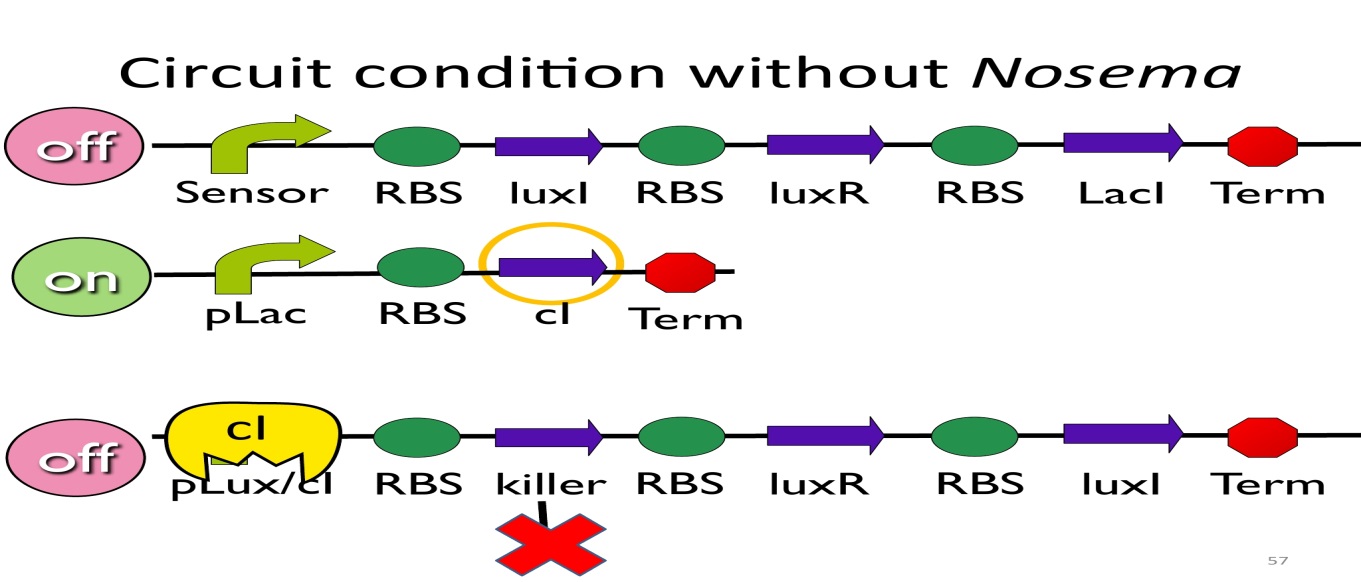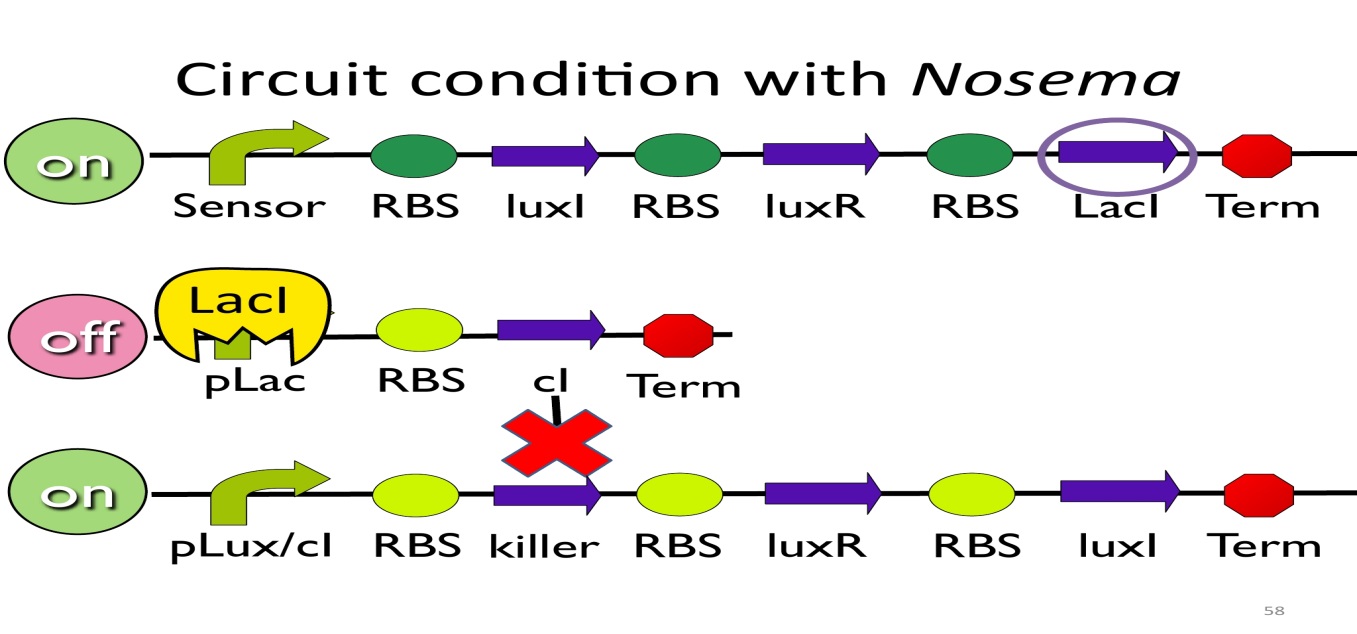Team:NYMU-Taipei/Modeling/MainParts
From 2013.igem.org


Function of the parts:
- circuit regulators:
- LacIregulatedpromoter(pLac) : when LacI exists, it will bind to LacIregulatedpromoter(pLac) and represses the promoter.
- pLux/cIhybridpromoter(plux/cI) : when luxR/AHL exists, it will open pLux/cIhybridpromoter(plux/cI), while cI will repress the promoter. What’s more, plux/cI is cI-dominant, which means when cI exists, the hybrid promoter will be repressed whether luxR/AHL exists or not.
- Circuit regulation:
- Circuit condition without Nosema:
Without NosemaCeranae, the first circuit will not open, and thus, no LacI will be produced. Since there is no LacI binding to pLac, pLac will not be repressed, which means cI will be produced. After that, cIwill bind to pLux/cI-hybridpromoter, leading the third circuit to be off.
- Circuit condition with Nosema:
When NosemaCeranae infects the bee, bee’s immune system will be activated, leading to the concentration of ROS(reactive oxygen species) to be high. In response, E. Kobee will enhance the production of oxyR, which binds to transcription binding site ahead of trxC (an oxyR-activated promoter; namely, the sensor), leading to the first circuit to be on.
Since the first circuit is on, the downstream LacI gene will be produced and bind to pLac, leading to the second circuit to be off.
After the second circuit is closed, no cI is produced, leading to the third circuit to be on (no repressor at all). And then, killer protein will be produced and kill NosemaCeranae.
- Positive feedback:
 "
"










